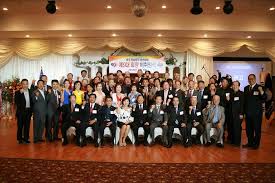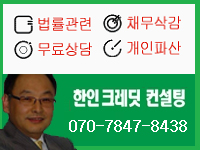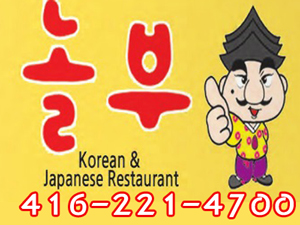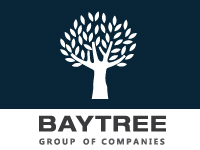CA
ON
호남향우회 (토론토)
전화: 647-981-0404
7 Bishop Ave. #2411 Toronto, ON

대형스크린,LED싸인 & 간판 - 대신전광판
전화: 416-909-7070
4065 Chesswood Drive Toronto, ON

스마트 디지탈 프린팅 - 인쇄 및 디자인
전화: 416-909-7070
4065 chesswood dr. Toronto, ON
.jfif)
1004열쇠
전화: 416-895-1004
4 Blakeley Rd. Toronto, ON

조준상 (로열르페이지 한인부동산 대표)
전화: 416-449-7600
1993 Leslie St. Toronto, ON

한인 시니어 탁구협회
전화: 647-209-8933
1100 Petrolia Rd Toronto, ON
4.jpg)
캐나다 공인 컨설턴트 - 한인크레딧 컨설팅
전화: 416-897-8438
1 High Meadow Place, Unit 2 North York, ON

놀부 - 한식/일식/중식
전화: 416-221-4700
3 Elmhurst Ave, North York, ON

홍이표치과
전화: 647-985-0456
9625 Yonge St #4, Richmond Hill, ON Toronto, ON
1.jfif)
행복부동산 -수잔정 Home Standards Brickstone Real
전화: 647-866-7878
180 Steeles Ave W Unit 30, Thornhill, ON

준비된 바이어 그룹 , BAYTREE 이너써클
전화: 416-226-5999
7030 Woodbine Ave. Suite 103 Toronto, ON

싸인건설
전화: 416-909-7070
4065 Chesswood Dr. North York, ON
0.jfif)
It would be a place where all the visitors including me share the life stories and experiences through their activities,especially on life as a immigrant.
Why don't you visit my personal blog:
www.lifemeansgo.blogspot.com
Many thanks.
블로그 ( 오늘 방문자 수: 27 전체: 225,820 )
초기의 캐나다 선교사들-한국 개화의 등불.
lakepurity
2008-01-22
Illustrious Canadians in Korean History
|Dr. Oliver R. Avison| | Dr. Francis William Schofield | |James Scarth Gale | | Dr. Sherwood Hall |
Notice: If you happen to have, or know information on Canadians who had contributed to the early relationships between Korea and Canada, please let us know.
The relationship between Canada and Korea has deepened in many areas over the years, including in trade, tourism and education. Our two Asia-Pacific countries share more today than ever before in their history. Exchanges are booming, and we can only look at the future with optimism.
Now, if we take time to look back, names such as Schofield, Avision, Hall and Gale will spring from the past. They are the names of Canadians who, in their own way, sowed the seeds that have made Korea one of the most successful nations in Asia. Canadians were some of the first Westerners to arrive in Korea during the late nineteenth century. Many arrived as missionaries but soon branched out into various fields. Canadians were instrumental in bringing Western medicine and education to Korea. They created hospitals and school, and trained the first Korean doctors in modern medicine, devoting themselves entirely to improving the lives of Koreans.
As Canadians become more aware of Canada's role as a Pacific nation. they are discovering that their nation has a rich varied of historical ties to the East. Unfortunately, these Canadian pioneers are virtually unknown in their own country. As Koreans rediscover Canada, they can show Canadians the immense impact these visionaries had in shaping Koreans' perceptions towards Canada and Canadians.
This brochure severs to recognize and honour the memory of those Canadians who so generously and selflessly gave their heart and soul for the love of Korea, and to underline the deep ties which bind Canada and Korea together.
Dr. Oliver R. Avison (1860 - 1956)
Dr. O. R.. Avison is, perhaps, the most famous Canadian in Korean scholars consider him to be the founder of modern medicine and medical education in Korea. Although he was born in England, Dr. Avison's family moved to Canada when he was a small child. After working as a school teacher and a pharmacist, Avison decided to pursue a career in medicine. He graduated from the University of Toronto Medical School in 1890 and began teaching at the College of Pharmacy and Medicine, as well as opening a private practice. While teaching, Avison met Mr. H. G. Underwood, one of the first American missionaries in Korea. Mr. Underwood, impressed by Avison's abilities, secretly gave Dr. Avison's name to the Presbyterian Church Missions Board in New York. At the time, the Board was looking for a doctor to send to Korea. Avison accepted and by June 1893, the Avison family(his pregnant wife and three children) landed in Pusan.
Soon after, the Avison moved to Seoul, where Dr. Avison became the Director of the government hospital. In addition, Avison was one of two personal physicians to King Ko-Jong. The government hospital was small, however, and was unable to adequately serve Seoul's needs. After a cholera epidemic in 1895, Dr. Avsion was inspired to make plans for a larger, more modern hospital. He was convinced that one good hospital, with all doctors working-together, would be able to do more for Korea than several smaller hospital.
During a vacation in the U.S.A., Dr. Avison was fortunate enough to encounter Mr. Louis Severance. Mr. Severance generously donated $10000 to finance the building of the new hospital. When Dr. Avison returned to Korea, he immediately purchased a site across from the railway station near Namdaemun. Construction started in November 1902 and hospital opened on September 23, 1904.
After opening the hospital, Avison realized that the foreign missionary doctors would not be able to staff the hospital forever. The best option was to begin training Korean students who would eventually run the hospital. Dr. Avison started to train seven young Korean men, using medical text that he had translated into Korean. After many years of hard work, these seven men became doctors in 1908, the first Korean doctors trained in western medicine. They were the first graduates of Severance Medical College and they stayed with Dr. Avison to teach more Korean students and continue the cycle.
In 1915, Chosen Christian College (Yonhi College)was started by Dr. H. Underwood. It was the first accredited institution of post secondary education in Korea. Sadly, Dr. Underwood passed away the next year and the fledgling college was left with no President. Dr. Avison, who had been involved in the planning stages, stepped in as the new President. From 1916 until 1934, Dr. Avison was President of both Yonhi College and the Severance Medical College. After his retirement in 1935, the staff and students of both colleges erected a statue in his honour and as thanks for his "monumental service and dedication to the Korean peoples as a physician, far-sighted leader and friend to Korea".Although this statue was removed by the Japanese, another one was placed on the grounds of the Nurses' College at Yonsei University (formed by the merger of Yonhi and Severance College). Dr. Avison and his wife left Korea in 1935 to travel across the North American continent visiting family and friends. They settled in St. Petersburg, Florida where Avison died in 1956.
Dr. Francis William Schofield(1889-1970)
Dr. Francis William Schofield has the honour of being the only non-Korean to be buried in the National Cemetery. He was given this honour due to his support of the Samil Independence Movement in 1919. On March 1, 1919, 33 people signed a Declaration of Independence, written during the Japanese occupation of Korea. Schofield was a teacher at Seoul National University and often encouraged his students to support the Samil Movement. Many of his students remember learning about the principles and right to self-determination and constitutional democracy rather than Biology classes. For his vocal support of the Samil, Schofield is considered by many Koreans to be the "34th man"and he was given the nickname "Tiger grandfather" as a symbol of respect.
Schofield was born in England, but moved to Canada in 1905. He finished his secondary education in Toronto and then enrolled in the Ontario Veterinary College (OVC) at the University of Toronto in 1907. He graduated at the top of his class in 1910, with a Bachelor of Veterinary Science. He began to teach at OVC despite the fact that he was diagnosed with poliomyelitis, which paralyzed his legs and, to a certain extent, his arms. After teaching for several years and receiving his Ph.D in 1911, Schofield was inspired to go to Korea. He arrived in 1916 and began teaching at Seoul University.
When Schofield arrived, he was overwhelmed by the oppressive rule of the Japanese. He was shocked by the Japanese attempts to eradicate the Korean culture and replace it with the Japanese. Schofield became an ardent supporter of the Samil Independence Movement and many times he could be seen riding his bicycle to solicit support for the movement in small towns and villages around Seoul. In the spring of 1919, however, Schofield's open denunciation of the Japanese regime led to him being imprisoned for a year and deported back to Canada.
Schofield returned to OVC and became the Director of Veterinary Hygiene and Research in 1921. Here, Schofield was responsible for discovering and isolating the causes of numerous diseases that had plagued livestock for decades. His discoveries changed feeding practices worldwide and won him several international recognition and rewards. Upon his retirement in 1955, Schofield returned to Korea and began teaching at Severance Medical College. He passed on his vast knowledge to his Korean students and continued to support the underprivileged with the establishment of an orphanage for orphans of the Korean War. He died on April 12, 1970 and his ashes were interred at the Seoul National Cemetery, the resting place of Korea's heroes and martyrs and a privilege rarely accorded to non-Koreans.
James Scarth Gale(1863-1937)
James Scarth Gale, born in Alma, Ontario, was the first Canadian to set foot on Korean soil. On December 12, 1888, Gale arrived in Pusan and continued on to Inchon (Chemulpo) soon after. Although Gale was inspired to visit Korea as a missionary, he is primarily remembered for his work as a translator.
Gale's passion for Korea came from his early years as a missionary. Soon after arriving, Gale moved from Seoul to Sorae, in Hwanghaedo, isolating himself from other English speakers. in Sorae, Gale totally immersed himself in Korean culture, language and traditions. He lived in a Korean grass hut, ate Korean food and spoke only Korean for three months. Gale tried to learn Korean by holding conversations with the village men in the stifling atmosphere of his hut. He would struggle to understand and express himself in such a foreign language. This time in Sorae laid the foundation for the mastery of Korean language and understanding of Korean life for which Gale became noted.
Most scholars agree that Gale was the best interpreter of the Korean mind to the Western world in the early 20th century. Gale translated over fifty documents, including a Korean-English dictionary, a history of Korea, one of the first Korean bibles, and a Korean version of Robinson Crusoe and Pilgrim's Progress. Gale's The History of Korean People became required reading for missionaries and scholars seeking to study Korea. It is regarded as a wealth of information of Korean ethnology, for and folklore and historical allusions. His dictionary was often given to recent arrivals in Korea to help make their acclimatization easier.
Gale's obvious interest in and love for Korea can easily be seen in his various translations. Gale was committed to exposing Koreans to Western works, while at the same time interpreting Korea's long-standing culture and traditions for the West. His translations, in both Korea and English, have allowed both nations to enjoy the richness and diversity of each other's culture and literature.
Gale's influence in Korea was not only limited to his translations. He was also a founding member of the YMCA in Korea, becoming its first Director in October 1903. The YMCA was responsible for starting many of the first western style schools and universities in Korea. In addition, Gale produced several newspapers for the Christians and foreign community, including Christian News, The Bible Magazine and The Korean Magazine.
Dr. Sherwood Hall (1893-1988)
Dr. Sherwood Hall has the distinction of being the first Western person born in Korea. Hall's father, Dr. William Hall, was a Canadian medical evangelist during the early 1890s. In 1892 Dr. William Hall married Rosetta Sherwood, an American missionary. Their wedding was the first Western-style wedding ceremony held in Korea, amid much public curiosity. Soon after, unfortunately, Dr. Hall's father and sister died of typhoid fever and were buried in Yanhwajin, southern Seoul.
Dr. Hall returned to Canada to study medicine and graduated from the University of Toronto School of Medicine in 1923. He returned to Korea in 1926 with his wife. While a child in Korea, Dr. Hall's guardian(Esther Kim Pak) contracted tuberculosis and had to leave to China to receive medical attention. Her death inspired Hall to create a tuberculosis sanatorium in 1928 at Haeju(now in North Korea). At the time, tuberculosis was considered incurable in Korea. Dr. Hall's sanatorium was one of the first of its kind.
In order to raise money and educate Koreans about tuberculosis, Dr. Hall introduced the first Korean Christmas seals in 1932. Koreans. unaccustomed to the idea of Christmas seals, originally thought the seals were a treatment and put them on their chests. The seals were designed by Western artists and featured Korean scenes. The first seals featured Namdaemun(South Gate). He donated the entire series of seals (1932-1940) to the Smithsonian Museum in Richmond, Ontario.
In, 1940 the Japanese colonial government subjected the Halls to a court trial where they were accused and convicted of "espionage activities". The Halls were sentenced to a three year jail term. They were forced to stop all their activities and were promptly deported out of Korea.
In 1984, Dr. Hall returned to Korea at the invitation of the Korean National Tuberculosis Association (KNTA). Dr. Hall celebrated his 91st birthday in Seoul with a large reception where he was presented with several awards. These included being made an honourably citizen of Seoul by the Mayor and the Order of Civil Merit, Mong-nyon Medal from the Minister of Health and Social Affairs. Dr. Hall spent nine days in Korea visiting his birthplace and, what he considered his "second homeland".